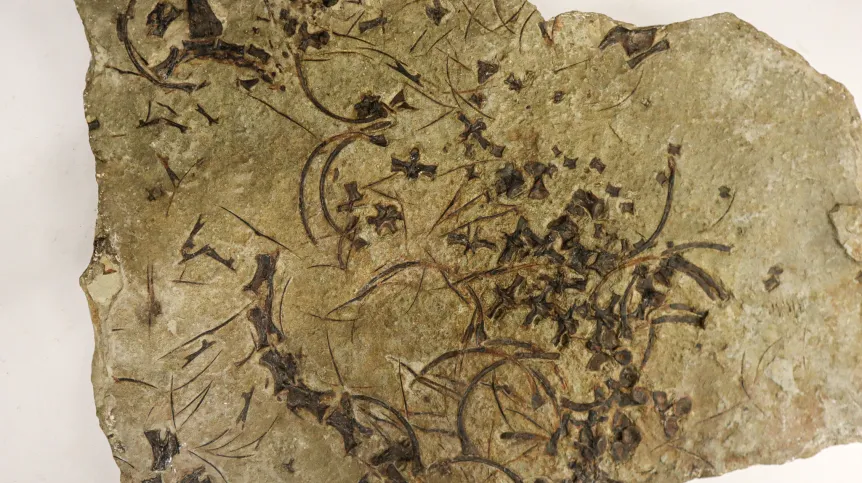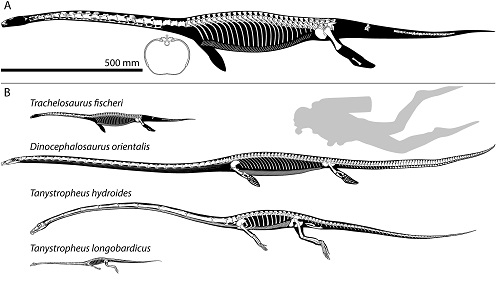
Trachelosaurus, a newly discovered reptile that lived about 245 million years ago, had a very long neck and a long spine. An international team of palaeontologists demonstrated this by going back to a description from a hundred years ago, when the bones were believed to come from several animals. Today it is known that they were the skeleton of one individual.
The skeleton was found in the mid-19th century at a site in Bernburg, Germany, known for the skulls of Triassic amphibians discovered there. So far, this skeleton is the only representative of reptiles from this place.
'In the early 20th century it was described as +something interesting+. The first professional description of Trachelosaurus fischeri - as it was named - comes from 1918, and its reinterpretation - from 1944. Initially, the remains were classified as the skeleton of a sauropterygian (also an aquatic reptile, but from a different group), and then for many years this specimen was considered to be mixed remains of several different animals,’ says Adam Rytel, a doctoral candidate at the Institute of Paleobiology of the Polish Academy of Sciences and a member of the research team.
The new research – based, in part, on the new discovery of similar animals in China - proves that all the bones come from the same individual. 'Trachelosaurus was simply an animal with a very long spine, with at least 48 presacral vertebrae, twice as many as humans have,’ the palaeontologist says.
The neck most likely made up a significant part of the body length of the animal, which was the size of a small seal, up to 1.5 meters long. It had fin-like limbs, and a long spine may have helped it move in water through snake-like body movements.

Researchers are not certain why these aquatic reptiles had such long necks. 'We have certain hypotheses, for example that when such an animal approached the attacked victim, the head, separated from the body by the length of the neck, did not cause significant disturbances in the water, which allowed it to swim up unnoticed and attack unexpectedly, Rytel says. He adds that today there are no such aquatic animals anymore, although some birds associated with the aquatic environment have long necks.
The described Trachelosaurus belongs to the group of archosauromorphs, a diverse group of animals that have lived on Earth for 300 million years, and its modern representatives include crocodiles and birds. Interestingly, Trachelosaurus is not related to plesiosaurs - the best known long-necked aquatic reptiles.
'Trachelosaurus is the oldest and only known European representative of trachelosaurids - Middle Triassic aquatic reptiles. The discovery shows how great the diversity of similar animals was in what is now Central Europe just a few million years after the end-Permian extinction, which was followed by a significant change in fauna around the world. We also see how quickly some groups of reptiles, present from Europe to China at the beginning of the Triassic, spread,’ says Adam Rytel.
More details are available in the paper published in the Swiss Journal of Palaeontology. The first author is Dr. Stephan Spiekman from the State Museum of Natural History in Stuttgart (Germany). (PAP)
PAP - Science in Poland, Agnieszka Kliks-Pudlik
akp/ bar/ kap/
tr. RL













